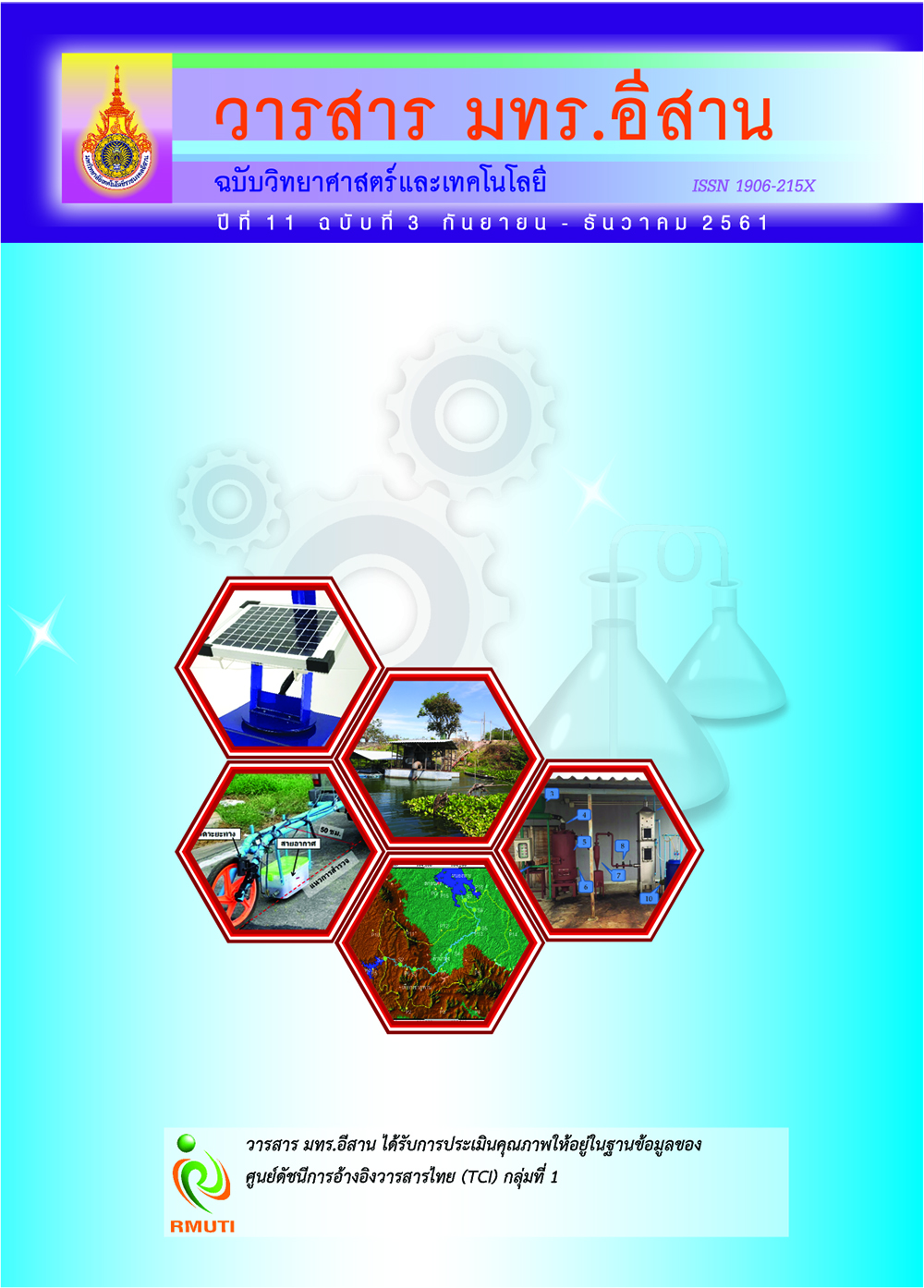การตรวจสอบสภาพถนนคอนกรีตด้วยคลื่นเรดาห์
Main Article Content
บทคัดย่อ
การทรุดตัวของถนนอันเนื่องจากโพรงใต้ผิวจราจรที่ก่อสร้างด้วยคอนกรีต นับเป็นสาเหตุหลักที่ก่อให้เกิดความเสียหายต่อทางหลวงในประเทศไทย โพรงอากาศที่เกิดขึ้นจะขยายตัวเป็นวงกว้างและสร้างความเสียหายต่อพื้นทางให้มากขึ้นต่อไปได้ การตรวจสอบนับเป็นปัจจัยสำคัญในการบำรุงรักษาโครงสร้างถนน ซึ่ง Ground Penetrating Radar (GPR) เป็นเครื่องมือที่ทำงานได้รวดเร็วและไม่ก่อให้เกิดความเสียหายต่อพื้นทางจราจรนำไปสู่การพัฒนาและตอบสนองแผนการบำรุงรักษาทางหลวงได้ การศึกษานี้ได้สร้างแบบจำลองการสำรวจด้วย GPR จากโมเดลโปรแกรมคอมพิวเตอร์เพื่อประโยชน์ในการออกแบบค่าตัวแปรต่าง ๆ ที่จำเป็นต่อการวิเคราะห์ผลรวมถึงการสร้างแบบจำลองผิวทางคอนกรีต การทดลองใช้เครื่อง GPR ในการสำรวจบนแบบจำลองและบนทางหลวงจริง ผลการศึกษาแสดงให้เห็นว่า ค่าความถี่ 900 MHz เป็นย่านที่เหมาะสมที่สุด ทั้งการจำลองการสำรวจที่ได้จากโมเดลทางคณิตศาสตร์และการวัดค่าจากแบบจำลองที่ได้ทำขึ้น สำหรับการทดลองจริงในภาคสนามพบว่า วิธีสำรวจด้วยคลื่นเรดาห์สามารถตรวจพบโพรงใต้ผิวทางคอนกรีตและยืนยันถึงสภาพที่สมบูรณ์ภายหลังการอุดซ่อมโพรงแล้ว
Article Details
เอกสารอ้างอิง
[2] Sato, M. (2005). Short Course Lecture Note on GPR and Its Application to Environmental Study. Lecture note of the Short course on Ground Penetration Radar and Electric Imaging for Solving Engineering Problem. AIT Bangkok, Thailand. 7-9 November 2005. Asian Institute of Technology. Thailand.
[3] Topp, G. C., Davis, J. L., and Annan, A. P. (1980). Electromagnetic Determination of Soil Water Content: Measurement in Coaxial Transmission Line. Water Resources. Vol. 16, pp. 574-582. DOI: 10.1029/WR016i003p00574
[4] GSSI. (2017). Antennas Manual. Geophysical Survey Systems, Inc. Access (4 April 2018). Available (https://www.geophysical.com)
[5] Antonis, G. (2006). GprMax2D/3D simulator Version 2.0. Access (20 November 2017). Available (https://www.gprmax.com/code/UserGuideV2.pdf)
[6] ASTM D4748-98. (2002). Standard Test Method for Determining Thickness of Bound Pavement Layers Using Short-Pulse Radar. Annual Book of ASTM Standards 2002, Section 04: Construction Soil and Rock (I). American Society for Testing and Materials. Vol. 04.08.
[7] Wiwattanachang, N., Giao, P. H., and Vichalai, C. (2015). Crack Detection in Fiber Concrete by Electrical Imaging Methods. The 4th International Symposium on the Fusion science and Technologies (ISFT2015). RUS. Pra Nakhon Si Ayutthaya, Thailand.
[8] Chatterjee, R. (1989). Antenna Theory and Practice. 2nd ed. New Age International Inc.
[9] CWP/SU. (2011). Seismic Un*x Release No. 43. An open source software package for seismic research and processing. Center for Wave Phenomena. Colorado School of Mines. Access (22 November 2017). Available (https://www.cwp.mines.edu/cwpcodes)
[10] SEGJ. (2004). Application of geophysical methods to engineering and environmental problems. Society of Exploration Geophysicists of Japan. Japan.


